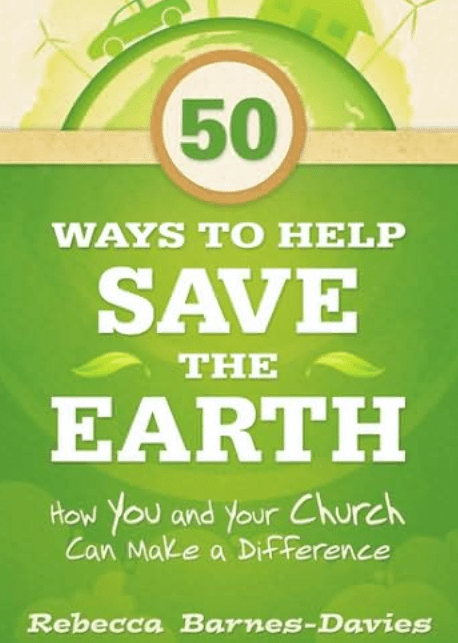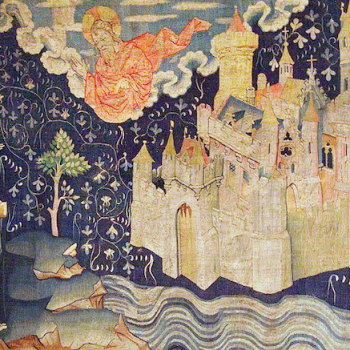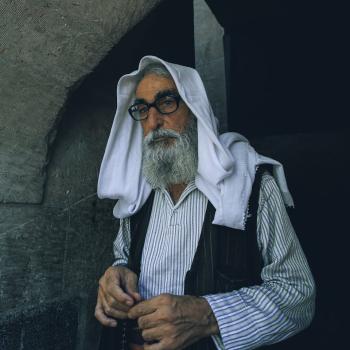By David Crumm -- July 6, 2009
 Green is joining red, white, and blue as an all-American color. In fact, you're probably greener than you were a decade ago. And if you're like millions of other Americans, you want to wind up even greener in the years ahead. That's why we're recommending a brand-new "green" book by Rebecca Barnes-Davies. Rebecca has been active over the past decade in diverse environmental networks. She's best known in her own denomination for leading Presbyterians for Restoring Creation and working with the National Council of Churches' earth-friendly programs. On the nationwide interfaith level, she recommends the National Religious Partnership for the Environment.
Green is joining red, white, and blue as an all-American color. In fact, you're probably greener than you were a decade ago. And if you're like millions of other Americans, you want to wind up even greener in the years ahead. That's why we're recommending a brand-new "green" book by Rebecca Barnes-Davies. Rebecca has been active over the past decade in diverse environmental networks. She's best known in her own denomination for leading Presbyterians for Restoring Creation and working with the National Council of Churches' earth-friendly programs. On the nationwide interfaith level, she recommends the National Religious Partnership for the Environment.
One refreshing truth about the green-faith movement is that it's remarkably free of conflict, compared with other social issues in congregations. The religious world, to put it simply, is going green from the Vatican to the grassroots. One example: There's a new Green Letter Bible that highlights creation-friendly passages of scripture in-well, of course, in green type.
National research shows that congregations by wide margins welcome opportunities to protect and preserve the natural world. Even the globe-hopping evangelist Rob Bell is opening up a big display on the need for clean water in theaters hosting his new world tour. But how do we take our first steps in the hundreds of thousands of smaller congregations coast to coast? Most churches, synagogues, mosques, and temples are modest sized and they're stressed out these days by our tight economy. Where does the ordinary person in a grassroots congregation begin to make a difference?
Rebecca answers those questions in 50 Ways to Help Save the Earth: How You and Your Church Can Make a Difference. The book is a great resource for small groups and actually provides hundreds of ideas-grouped in fifty categories. Right here, we're offering you a preview of this important new resource to get you thinking as you wait for a copy of her book to arrive. (Click on the Amazon link at right to order a copy.)
 HIGHLIGHTS OF OUR CONVERSATION
WITH REBECCA BARNES-DAVIES
HIGHLIGHTS OF OUR CONVERSATION
WITH REBECCA BARNES-DAVIES
DAVID: Let's tell people a little bit about your background. You're attending seminary now in Louisville, Kentucky, but you've been active for a good decade in religious environmental work. You're nationally known in your denomination. Also, you're a big believer in the power of sharing good ideas between various local congregations-and also between various faiths. Inside your book, along with each of the fifty categories of environmental work, you include a little story from some real-life group or congregation or Web site. You call those stories, "Walk the Talk." It's refreshing to find someone so optimistic about the power of people to make a difference at the grassroots!
REBECCA: That's one thing that's distinctive about this new book. These Walking the Talk stories tell you what other people already are doing. When I go talk to groups about these issues, I find that people are hungry for good examples. People want to hear real stories of things that are working for real people.
DAVID: I like that way of thinking. That's why we're talking today. Our readers will find a lot of books about environmental awareness on bookstore shelves. This one's unique. I think it's solidly designed with the practical needs of congregations and lay people in mind. So, one big question people will ask is this: Where should we start? A lot of congregations want to get involved in green projects-but they don't know how to take the first step. You're giving them fifty choices here, but what are the first things we should do?
REBECCA: The first thing is: Find out about your congregation. You want to know where the energy in your congregation is already. What are people's passions? Where does the leadership already show depth? I would start with that.
DAVID: You talk in the book about creating a larger spiritual awareness of God's Creation. You're not just asking people to start one more program or form one more committee. You want them to rethink the way they preach and teach about Creation, right?
REBECCA: Yes, you begin by working where people's passions and strengths already are. If people are passionate about worship and your congregation is really a Sunday-morning community-then start by including liturgies and hymns about caring for Creation. Use preaching as a primary tool for expressing this. If your congregation rallies more around programs and small groups and activities for adults and children-then I would start there. People might want to work on an energy audit or focus on a summer camp or a Vacation Bible School with earth-friendly themes. The important thing is to find out what most people in the church agree that your church does well. By starting there, this means we're not deleting some other effort or pushing something else to the side to make room. This can then become part of the congregation's existing energy and strength. You don't want to walk in and declare that you're going to create some huge new program that will overlay everything else people already are doing.




